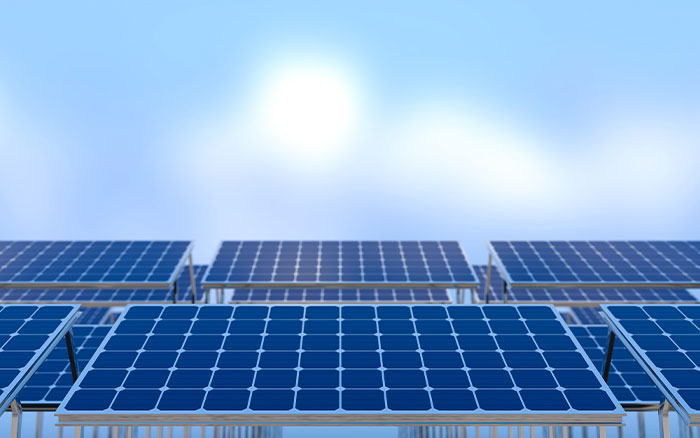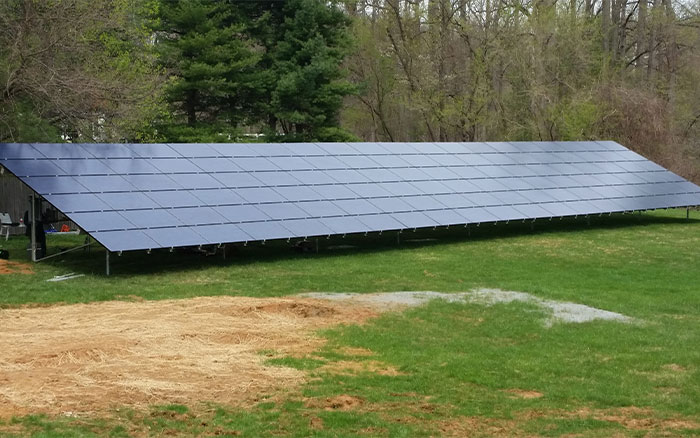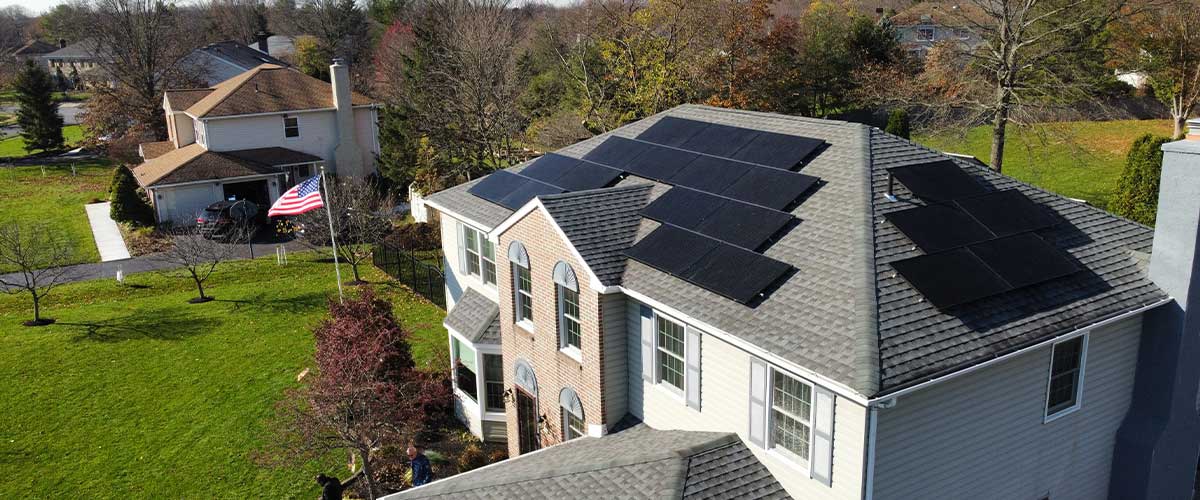The Types Of Solar Panels And The Parameters That Are Useful In Selecting Them
Solar energy has become increasingly popular due to its renewable, clean nature. Climate change concerns, as well as the need for renewable energy, makes various kinds of solar panels an appealing option. A greener and more sustainable future relies heavily on solar panels in the present day. Concentrating solar-thermal power (CSP) allows for the protection of the environment through solar power generation. You can harness solar energy in USA by using different types of solar panels.
What is a Solar Panel?

By converting sunlight into electricity, photovoltaic (PV) panels can be used on solar panels. It is made up of different kinds of solar cells which work in tandem to produce electricity. Each cell is made of layers of semiconducting material, like silicon, that are designed to absorb sunlight's rays. This is because the special material in the solar panel absorbs sunlight and transforms the light into an electrical current. This electricity can be utilized immediately or stored in batteries for use later on.
Different Types of Solar Panels and Their Categorization.

Different kinds of solar panels are suited to different purposes and needs. The fact that the sun can be utilized differently than it is on Earth or in space points to the fact that where you are is a major factor in choosing one of the kinds of solar panels over others.
Differentiating between various types of solar panels typically involves separating single-junction and multi-junction solar panels, or first, third, second, or generations. Multi-junctions and single-junctions differ with respect to the number of layers that are able to see the sun's rays. In contrast, the classification by generation is focused on the material and efficiency of the various types of solar panels.
1st Generation Solar Panels.
These are the most common types of solar panels constructed of polysilicon or monocrystalline silicon and are the most frequently used in normal environments.
Monocrystalline Solar Panels (Mono-SI).
.jpg)
This kind of solar panel (made out of monocrystalline silicon) is the purest type. It is easy to identify them by their uniform dark look and round edges. The silicon's purity is high, which is why this kind of solar panel has one of the highest rates of efficiency, with the most recent ones exceeding 20%.
Monocrystalline panels offer a high power output, take up less space, and last for the longest time. Of course, this means they are also the costliest of the group. Another benefit to consider is that they are slightly less impacted by high temperatures than polycrystalline panels.
Polycrystalline Solar Panels (Poly-SI)

It is easy to identify the panels by the fact that this type of solar panel is square, its angles aren't cut, and they have an eerie blue-spangled look. They are created by melting raw silicon, which is a quicker and more affordable process than those used for monocrystalline panels.
This means lower costs at the end of the day. However, they also have reduced efficiency (around 15 percent), lower efficiency in space, and a shorter time-to-life because they are impacted by high temperatures more than others. However, the differences between polycrystalline and monocrystalline varieties of solar panels aren't that significant, and your choice will depend on your particular situation. The first type offers slightly higher efficiency for space with a higher cost, but the power outputs are identical.
2nd Generation Solar Panels.
These cells are a variety of solar cells with thin film and are mostly used to power photovoltaic stations. They can be used in smaller solar systems.
Thin-Film Solar Cells (TFSC)

If you're seeking a lower-cost alternative, you may consider looking at thin film.
A thin-film solar panel consists of a copper, cadmium, or silicon photovoltaic film. As a result of their economies of scale, these solar panels are less expensive than other solar panels.
Also, they have a lot of flexibility, opening up many possibilities for different applications. Due to their large size, they are not suitable for residential use. Furthermore, they come with the shortest warranties since their lifespan is less than the polycrystalline and monocrystalline varieties of solar panels. However, they are an excellent choice for the various types of solar panels if there is plenty of space available.
Amorphous Silicon Solar Cell (A-Si)
Have you ever tried a solar-powered pocket calculator? Yes? You've probably seen these kinds of solar panels in the past. The amorphous silicon solar panel is one of the various kinds of solar panels. It is the one used most often in pocket calculators. This kind of solar panel is made up of triple layers technology that is the most efficient of the thin film varieties.
To give an idea of what "thin" means, in this instance, there's an amount of a micrometer (one-millionth of one mile). With a 77% efficiency, the cells are less efficient than the crystalline silicon ones, which have an efficiency of 18%. However, the benefit is that A-Si-Cells are inexpensive in price.
3rd Generation Solar Panels.
Third-generation solar panels incorporate various thin-film technologies. Still, the majority of them are in the development or research phase. Some of them generate electricity, making use of organic substances, while others utilize inorganic materials (CdTe, for example).
Biohybrid Solar Cell

Among the varieties of solar panels still being developed is the Biohybrid solar cell. It was discovered by a specialized team from Vanderbilt University. The concept behind the innovation is to make use of the photosystem 1 and mimic the process of photosynthesis that is natural. Suppose you'd like to know more about how the biohybrid cell works in detail. In that case, you can look up more information in the American Journal of Optics and Photonics. It provides more details on how these cells function. The majority of the materials employed for this cell are similar to traditional methods. However, by combining the various layers of photosystem 1, the conversion from chemical energy to electrical energy is much more efficient (up to 1,000 times more efficient than first-generation solar panels).
Cadmium Telluride Solar Cell (CdTe)

With this style of solar panels, Cadmium Telluride enables the production of solar cells at affordable prices and has a shorter payback period (less than one year). It requires the most water out of all solar energy techniques. The short payback period of CdTe solar cells minimizes your home's carbon footprint. Cadmium Telluride has the drawback of being harmful when inhaled or ingested. People in Europe in particular are concerned about these solar panels' technologies, which is one of the biggest obstacles.
Concentrated PV Cell (CVP and HCVP)

As with conventional photovoltaic systems, concentrated PV cells produce electricity. Comparatively to other photovoltaic technologies, multijunction Arise solar panels have a 41% efficiency.
In relation to other solar panels with curved mirror lenses, CVP cells have curved mirror lenses that bundle the sun's light and improve efficiency.
It only remains to face the sun at the perfect angle for CVP solar panels to be as efficient. Observing the sun will be done by a solar tracker in the solar panel.
Let's say you want to learn more about solar panels and green energy. Fill out the non-binding form at the top of the page and benefit from our free and easy service. Up to four estimates from reputable and reliable suppliers are provided by Greenmatch.
Conclusion
The use of solar panels can be an effective way to generate renewable energy while reducing our dependence on fossil fuels. As well as reducing electric bills, they are also environmentally friendly.
But, deciding on the best size solar panel for Delaware is crucial to ensure the best efficiency and value. With the goal of creating a sustainable and eco-friendly future, solar panels can provide our businesses and homes with renewable energy and reduce our carbon footprints. All of us can help create a better future by investing in different types of solar panels.
